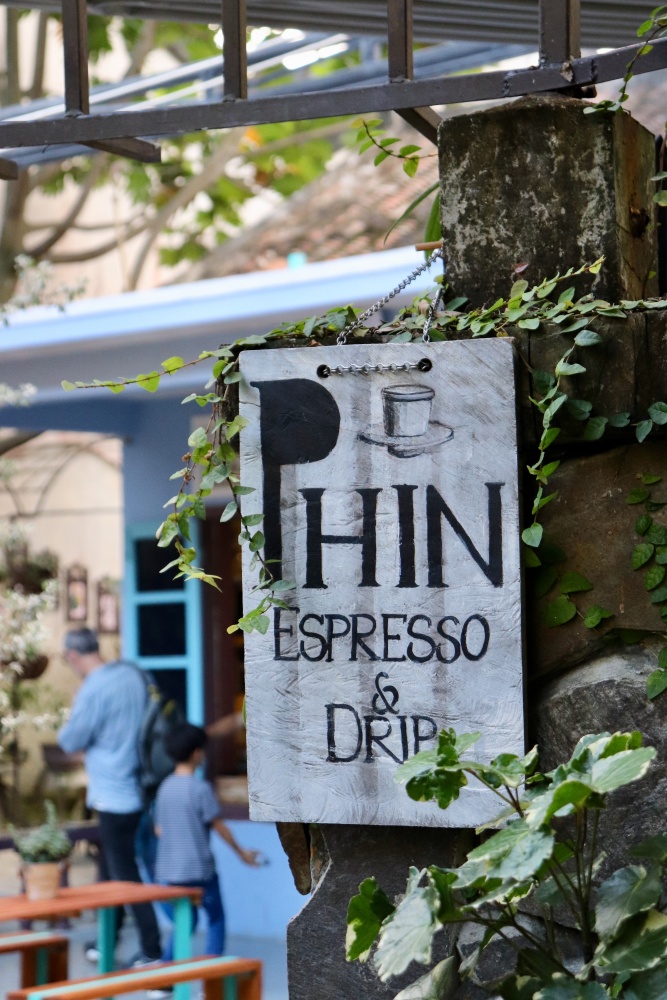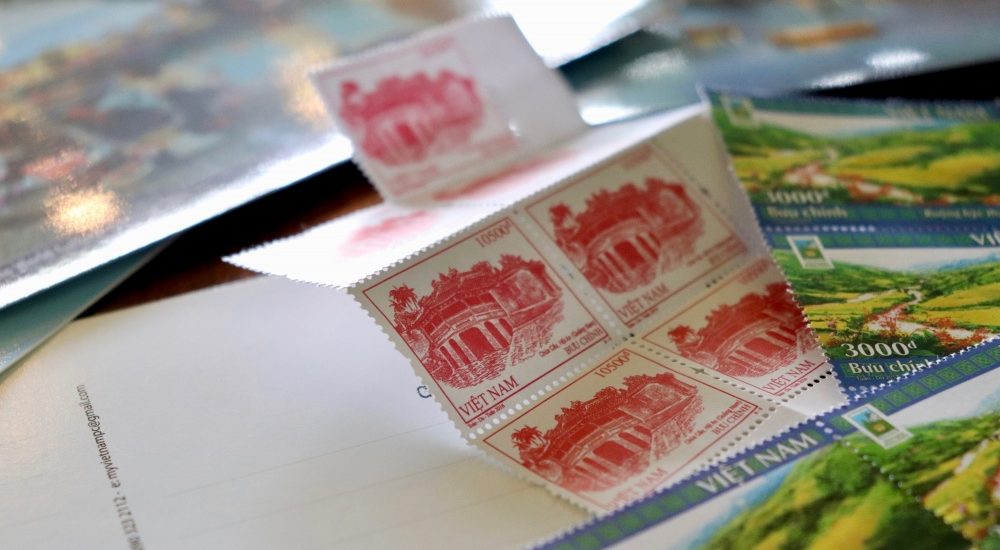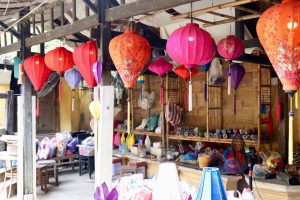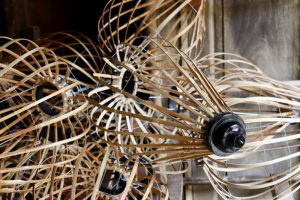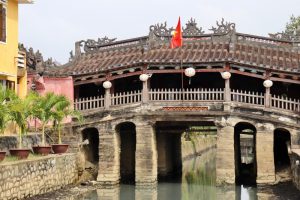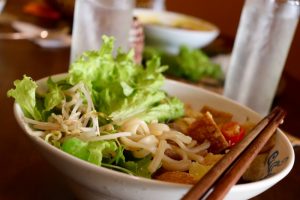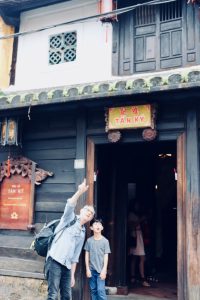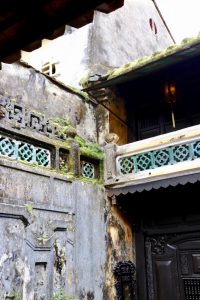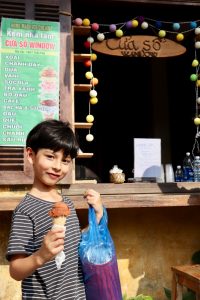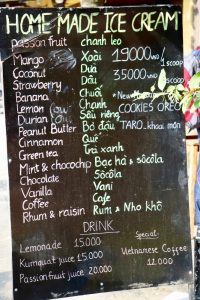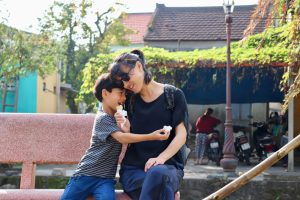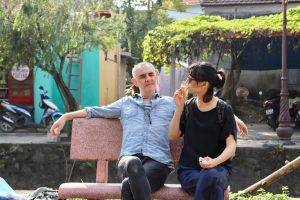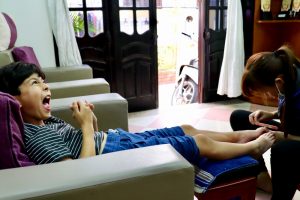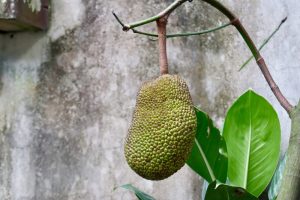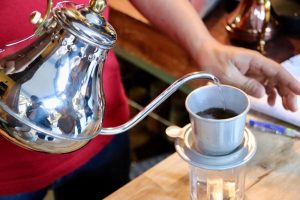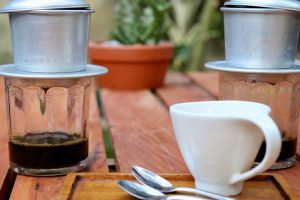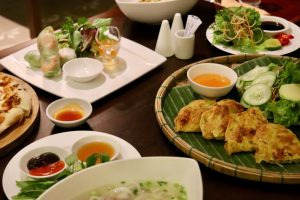A day of rest. We slowed down the pace a bit today and meandered through Old Town, popping into the odd shop and enjoying cold beverages while writing postcards in one of the quiet cafes overlooking the river. I couldn’t resist leaving Hoi An without one of its famous fabric lanterns, so we stopped in the Hoi An Handicraft Workshop where lantern-making classes are held. I left with two and can’t wait to light them up at the next Lunar New Year.
The peaceful morning allowed us to take a better look at one of Vietnam’s most famous and graceful bridges, the Japanese Covered Bridge, originally constructed in 1593. It was built to connect the Japanese and Chinese quarters, flattened by the French for car access and reconstructed to its original shape in the mid-1980s. We also visited the Old House of Tan Ky, an incredibly well-maintained private residence of an 18th century merchant, displaying Chinese, Japanese and Vietnamese influences. Hoi An is a town prone to flooding, so this home is made of ironwood to help withstand prolonged contact with water.
Since this was our last day in Hoi An we made sure to try a few more of its local food specialties. Our first choice, White Rose Restaurant for its banh bao vac (shrimp dumplings), was sadly closed for the Lunar New Year. Well, when one door closes another one opens. And, that’s how we found Mi Rong Noodles, a cute place off the main road selling just noodles. We opted for a dish only found in Hoi An called cao lau. Because of its status as a major trading port long ago, Hoi An’s cuisine is a beautiful multi-national mix. Cao lau embodies the old spirit of Hoi An, since its origins are unclear; the thick noodles are reminiscent of Japanese udon, but the sliced pork conjures up the char siu found in Chinese cooking. What really makes this dish special is the mystique surrounding its noodles. The recipe is highly guarded; only a few families supply all of the cao lau noodles for Hoi An. Cao lau noodles are said to be made using only water from one ancient well in Hoi An called Ba Le well. The water is supposedly mixed with a specific type of ash from a tree only found on the Cham Islands, off the coast of Hoi An, to create a lye solution. This gives the noodles their distinctive color and taste. When combined with the pork slices, crisp greens, bean sprouts and rice croutons the noodles really come alive and make this one of Hoi An’s tastiest dishes.
Continuing with our theme of relaxation we headed to Ba Le Well Beauty Salon, since Philip desperately wanted a haircut. Instead of sitting idly and waiting, Jules and I decided to get ‘pedicures.’ We both have very ticklish feet, so it was pretty funny trying not to laugh or kick our pedicurist while having our feet massaged. Feeling pampered we walked down a lovely, tree-lined street along a small canal where I surprised the boys with an afternoon treat of homemade ice cream. I was slightly disappointed that durian was sold out, but the coconut more than made up for it.
Now, the coffee culture in Vietnam. From what we observed it seems that the Vietnamese love their coffee. We had tried the egg coffee in Hanoi, but I had heard about a traditional Vietnamese drip coffee spot in Hoi An called Phin Coffee. One of the general rules of travel, in my experience, is that the harder a place is to find the more wonderful it is. Phin Coffee was no exception. We zigzagged through quiet residential alleys to find this charming cafe with an open courtyard and an incredibly sweet staff. The specialty here was the drip coffee, where hot water is poured over the coffee grinds in a metal filter, and then stirred with sweetened condensed milk. The coffee was very bitter and strong, but the condensed milk really mellowed it out and gave us a nice boost of energy.
We headed back to the hotel and couldn’t bring ourselves to enter the fray of the Old Town at dusk. So, Philip and I did something we never do…we ordered room service. Room service is usually stupidly expensive, but the prices in our hotel were very reasonable by Western standards. A day of relaxation, indeed! What blew us away was the quality of the food, though. We ordered a real smorgasbord, including one more of Hoi An’s specialties, which we hadn’t tried yet, the banh xeo (savory, fried rice pancake), and Jules was so excited for his Margherita pizza.
On our last night in Vietnam, we all felt sated with the scrumptious food and incredible experiences we had on this most magical of adventures.
